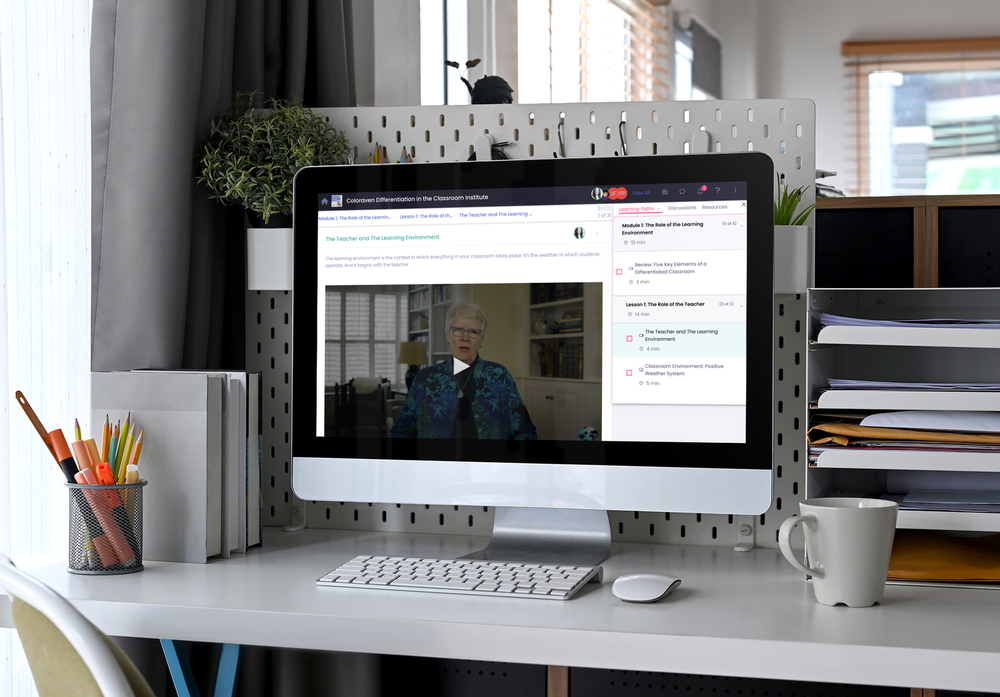Differentiation in the Classroom
Learning Institute
About the Institute
Together with Carol Ann Tomlinson, participants will explore differentiated instruction by focusing on five key elements: learning environment, curriculum, assessment, instruction, and leadership of students, and management of classroom routines. Participants will think about why differentiation is important and come to better understand what differentiation is. As a result, they should be better prepared to take their own next steps in teaching responsively or supporting teachers as they seek to grow in differentiation.

About Carol Ann Tomlinson
Dr. Carol Ann Tomlinson is William Clay Parrish Jr. Professor Emeritus at the University of Virginia's School of Education and Human Development. The author of more than 300 publications, she works throughout the United States and internationally with educators who want to create classrooms that are more responsive to a broad range of learners.
.jpg?width=600&height=600&name=tomlinson-carol_600x600_2023-01-23%20(1).jpg)
Learning Paths in the Differentiation in the Classroom Institute:
Introduction to Differentiation
In this learning experience, participants will take a deep dive into why differentiated instruction is important and what differentiation is. You’ll think about your own “why” and reflect on this based on stories that author Carol Tomlinson shares. Over the years, Carol has worked with evolving definitions of differentiation, which she will share, along with the definition she uses today. The definitions not only frame an understanding of the scope and intentions of differentiation but can also become guides for thinking about and planning effective differentiation.
3 hours

Differentiation and the Learning Environment
Creating an invitational learning environment is perhaps the most important thing teachers do in a classroom, yet little attention is paid to what one looks like, how teachers craft them, and why they matter so much to the full range of learners. Together with Carol Ann Tomlinson, participants will think about the make-or-break role an invitational learning environment plays in differentiated instruction and student growth. You will have a chance to learn through videos, reading, and many examples, as well as share best practice examples with one another.
3 hours

Differentiation and Curriculum
We often think of differentiation as an instructional model apart from the curriculum we teach, yet the nature and quality of what we teach contributes significantly to student success, or lack of success, in the classroom. Through videos, examples, readings, and reflections Carol Tomlinson will guide your exploration of characteristics of curriculum that promote engagement and understanding in a broad range of learners. You will also examine the critical link between curriculum, formative assessment, and instruction.
5 hours

Differentiation and Formative Assessment
Formative assessment is the compass that guides daily planning in a differentiated classroom and is a powerful element in helping students learn better, learn to learn better, and helping the teacher teach more effectively. Using videos, examples, readings, and reflections on your own work, you will deepen your understanding of the kinds and purposes of formative assessment, extend your repertoire of approaches to understanding students’ growth trajectories during a unit of study. Carol Tomlinson will also demonstrate how to use what you learn from formatively assessing students to plan instruction that is more responsive to students’ diverse learning needs and how to teach students the skills of learning that support them in developing agency as learners.
6 hours

Differentiation and Instruction
Instruction refers to how we teach and is what educators think of most often when they envision differentiation. There is no recipe for differentiating instruction, but there are important principles and practices that should guide differentiation and there are many strategies that support attention to student learning differences. You will learn what it means to differentiate content, process, product, and affect/learning environment in response to students’ varied readiness levels, interests, and learning preferences. You will also learn how to balance use of “high prep” and “low prep” approaches to differentiation and what it means to “teach up” in order to give all students equity of access to rich and challenging learning opportunities.
6 hours

Leading and Managing a Differentiated Classroom
The idea of guiding the work of a room full of students can be intimidating, if not traumatic, to many new teachers. In the process of trying to figure out how to accomplish that feat, it is easy for teachers to begin to think about “classroom management” as a control mechanism and to think about “the students” instead of “THE student.” That pattern inhibits both teaching and learning. Differentiation suggests approaching the topic in a different way–leading students to develop a shared ownership of a classroom that is designed to work for each learner and then working with the students to develop routines and guidelines that enable attention to variable student learning strengths and needs. Carol Tomlinson will guide you in thinking about what it means to create an “orderly-flexible” classroom with students at its center.
5 hours

 Login
Login